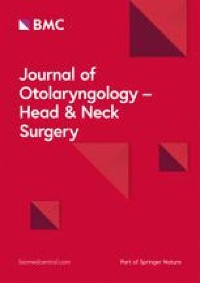Abstract
Medialization laryngoplasty, also known as type I thyroplasty is widely accepted as a definitive treatment for paralytic and nonparalytic glottal incompetence. This technique uses material to medialize the vocal fold to restore glottal contact and function. Common materials that are used include Gore‐Tex (expanded polytetrafluoroethylene), silicone, calcium hydroxyapatite and titanium.
Gore‐Tex has been in use since the 1970s in vascular surgery and facial reconstruction with good biocompatibility and first described for use as a medialization implant in 1998 by McCulloch and Hoffman.1,2 In a 2010 national survey, the percentage of surgeons using Gore‐Tex increased from 36% to 64% compared to the decrease in surgeons carving Silastic from 76% to 24%.3 Gore‐Tex is increasing in popularity as an implant material because of its pliability, ease of placement and removal, and biocompatibility.
Despite the apparent short‐term effectiveness of Gore‐Tex in treating glottal incompetence, there is a lack of long‐term data related to its use reported in the literature. To understand the long‐term effectiveness of Gore‐Tex and its associated complications, we performed a review of cases at our institution over the past 19 years.
Materials and Methods
The Partners Institutional Review Board approved this retrospective case series (IRB 2109P0002165). Electronic medical record data from consecutive patients who underwent medialization laryngoplasty by the senior author (R.A.F.) between 1 January 2001 and 30 June 2019 at Massachusetts Eye and Ear were reviewed in this study. Patients included were adults (≥18 years old) who underwent medialization laryngoplasty with Gore‐Tex. Exclusion criteria consisted of patients who had an adduction arytenopexy and/or cricothyroid subluxation performed at time of surgery. The study aims included understanding the long‐term effectiveness by analyzing the revision rate and complications associated with Gore‐Tex. The primary outcome measures were revision procedures and complications. The revision procedures were categorized as either a touch‐up injection laryngoplasty or revision surgery and complications included but were not limited to hematoma, dyspnea, implant extrusion, and need f or emergency tracheotomy. The STROCSS (Strengthening the Reporting of Cohort Studies in Surgery) 2019 reporting guideline was followed.
Surgical technique
Medialization laryngoplasty was performed according to techniques previously described by McCullough and Hoffman1 with the following modifications. Surgery was performed under local anesthesia through an open approach using 1.0 mm thick Gore‐Tex soft tissue patch (W.L. Gore & Associates, Inc., Flagstaff, AZ). The Gore‐Tex patch is cut into a ribbon that is 1cm in width (Figure 1). A thyrotomy window was planned 5‐7 mm from midline and 2‐3 mm from the inferior border of the thyroid cartilage. The sagittal saw with a 1 mm blade was used to create the thyrotomy window (approximately 2 mm by 3 mm). The window should be sufficiently large enough to enable insertion of the Gore‐Tex strip and the manipulating instrument (Figure 2). The inner perichondrium was incised but not removed, to improve precise placement of the implant. The length of Gore‐Tex inserted and unilateral versus bilateral nature of medialization was determined intra‐operatively based on voi ce quality and surgeon preference. Surgical end‐points were based on improved voice quality and medialization of the true vocal fold viewed with a fiberoptic nasolaryngoscope. The technique was not modified during the duration of the study period.
Statistical Analysis
Preoperative and postoperative data were compared, and all data were analyzed using SPSS Statistics (version 25.0; IBM). The continuous variables were reported as mean with ranges (minimum‐maximum). Categorical variables were reported as numbers (n) and proportions (%).
Results:
We identified 73 patients who met inclusion and exclusion criteria (Table 1). There were a total of 46 unilateral and 27 bilateral Gore‐Tex cases. The mean duration of follow up was 1303 ± 1445 days (62‐5214). There were 8 patients who were lost to follow‐up. There were no cases of hematoma or need for emergency tracheotomy. In the 3 patients who had revision surgery within 48 hours due to dyspnea, 2 cases were unilateral and 1 case was bilateral. Touch‐up injections were performed in 10/73 patients (13.7%) and revision surgeries were performed in 7 patients (9.6%). The overall complication rate was 11% (8/73 patients): 3 patients experienced dyspnea within 48 hours after Gore‐Tex insertion and 5 patients had delayed Gore‐Tex extrusion (Table 2). There were 2/60 patients with a history of neck radiation in the non‐extrusion group. There were 2/5 with radiation exposure in the extrusion group (P‐value=0.027). There were 1/5 with excessing coughing in the extrusion group and 1/60 in the non‐extrusion group (P‐value=0.149).




